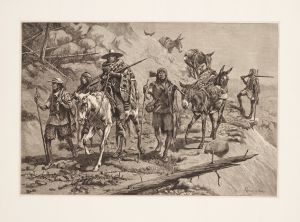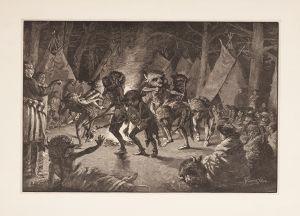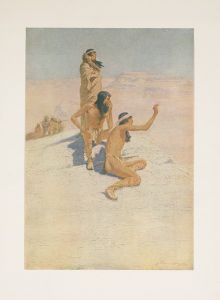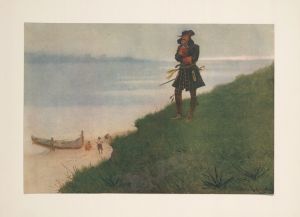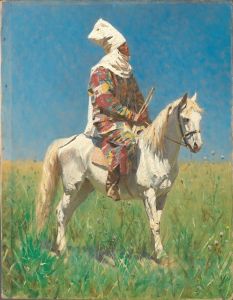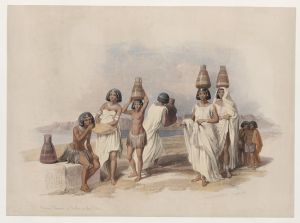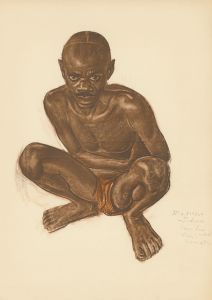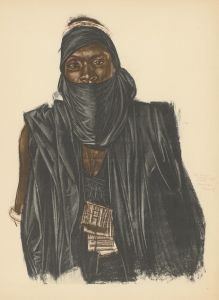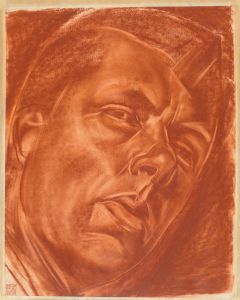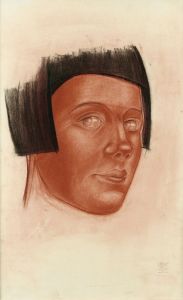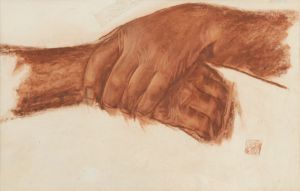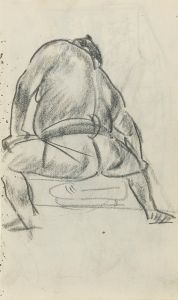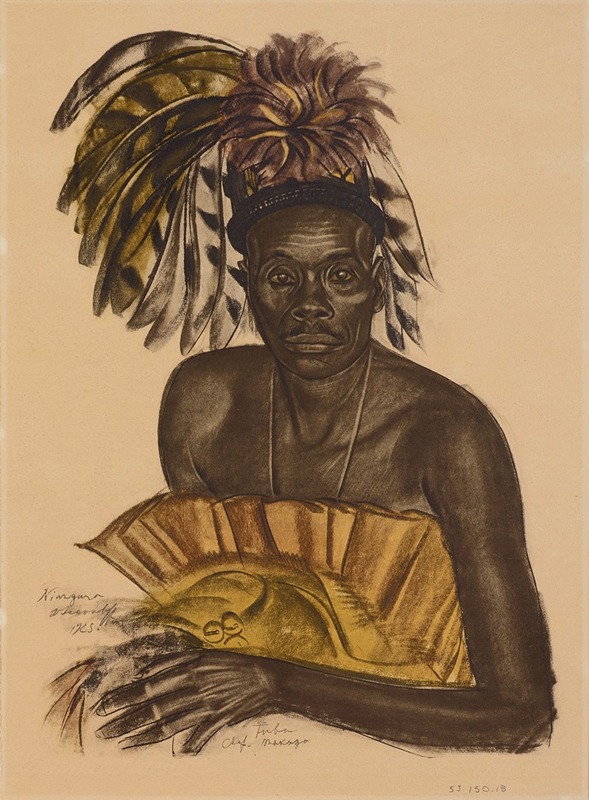
Tuba, chef Matchaga, Niangara, Haut Ouelle
A hand-painted replica of Alexandre Jacovleff’s masterpiece Tuba, chef Matchaga, Niangara, Haut Ouelle, meticulously crafted by professional artists to capture the true essence of the original. Each piece is created with museum-quality canvas and rare mineral pigments, carefully painted by experienced artists with delicate brushstrokes and rich, layered colors to perfectly recreate the texture of the original artwork. Unlike machine-printed reproductions, this hand-painted version brings the painting to life, infused with the artist’s emotions and skill in every stroke. Whether for personal collection or home decoration, it instantly elevates the artistic atmosphere of any space.
Alexandre Jacovleff, also known as Alexander Yevgenievich Yakovlev, was a Russian painter and graphic artist known for his involvement in the artistic movements of the early 20th century. Born in Saint Petersburg in 1887, Jacovleff was a prominent figure in the art world, particularly noted for his participation in the French artistic scene after emigrating from Russia following the Russian Revolution.
Jacovleff's work is characterized by his keen interest in ethnographic subjects, which is evident in his painting "Tuba, chef Matchaga, Niangara, Haut Ouelle." This painting is part of a larger body of work that Jacovleff produced during his travels with the Citroën Central Africa Expedition, also known as the "Black Cruise," which took place from 1924 to 1925. This expedition was a significant event organized by the French automobile manufacturer Citroën to promote their vehicles and explore the African continent. Jacovleff was invited as the official artist of the expedition, tasked with documenting the journey and the diverse cultures encountered along the way.
"Tuba, chef Matchaga, Niangara, Haut Ouelle" is a portrait that reflects Jacovleff's skill in capturing the essence of his subjects with both sensitivity and precision. The painting depicts Tuba, a chief of the Matchaga people, who resided in the region of Niangara, located in what is now the Democratic Republic of the Congo. The title of the painting references the geographical area of Haut Ouelle, which is part of the larger Uele District in the northeastern part of the country.
Jacovleff's approach to portraiture is marked by his attention to detail and his ability to convey the dignity and individuality of his subjects. In this particular work, he employs a realistic style that highlights the intricate features and traditional attire of the chief, providing a glimpse into the cultural richness of the Matchaga people. The painting is not only a testament to Jacovleff's artistic talent but also serves as an important historical document that offers insights into the diverse cultures of Africa during the early 20th century.
Throughout his career, Jacovleff was celebrated for his ability to blend academic techniques with a modern sensibility, making his work accessible and engaging to a wide audience. His contributions to the art world extend beyond his paintings, as he was also a respected teacher and served as the director of the Russian Academy of Arts in Paris.
Jacovleff's works, including "Tuba, chef Matchaga, Niangara, Haut Ouelle," continue to be appreciated for their artistic merit and ethnographic significance. They provide valuable perspectives on the cultural interactions and exchanges that took place during a period of significant exploration and discovery. Today, his paintings are held in various collections and museums, where they continue to be studied and admired by art historians and enthusiasts alike.





